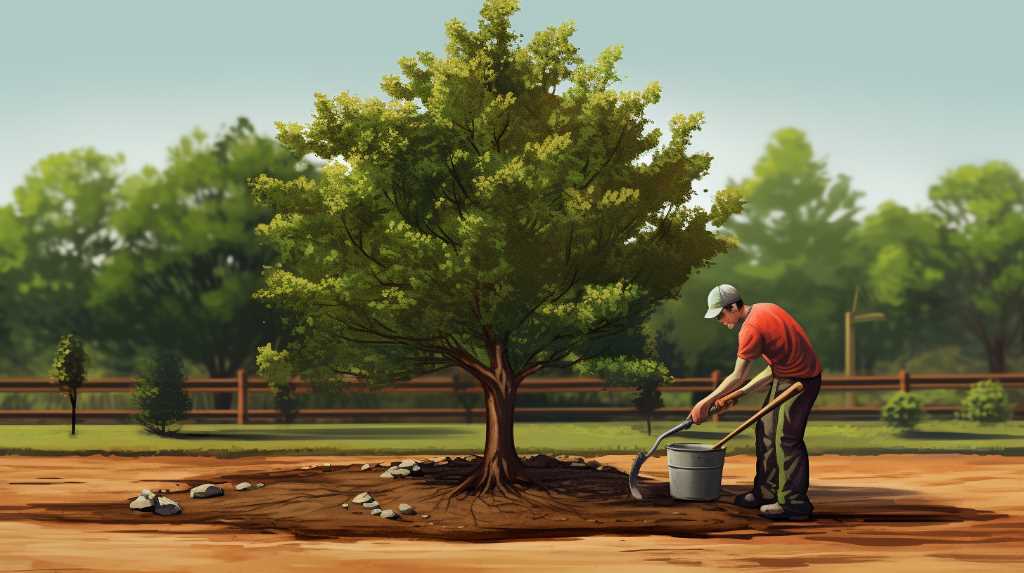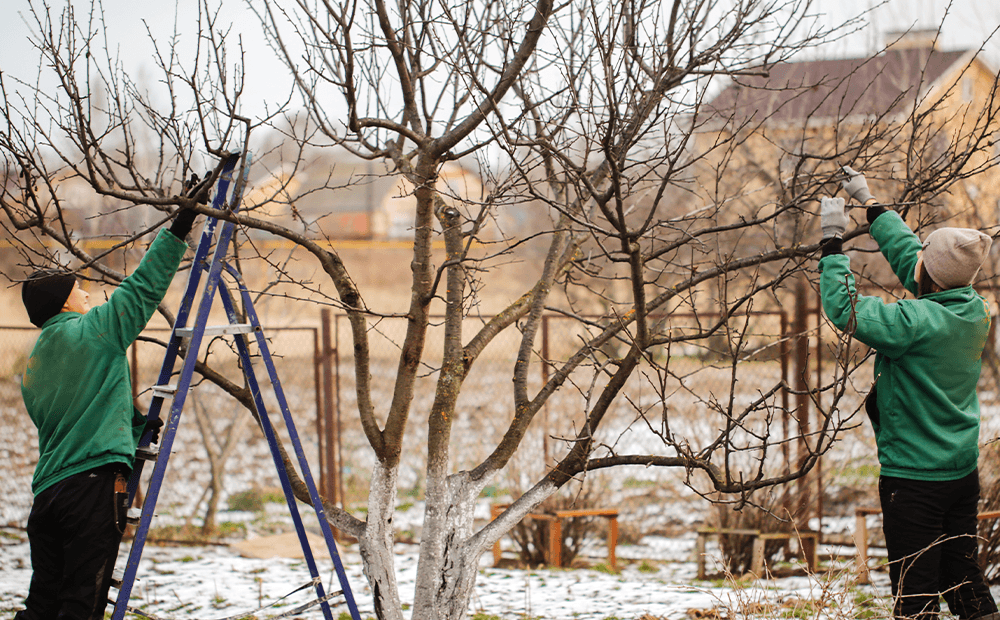Safety and Regulations
Essential Post-Planting Tree Care Tips


As a tree lover and proud caretaker, I’m here to share some essential post-planting tree care tips.
Picture this: you’re standing beneath a majestic oak, its branches stretching towards the sky.
To ensure your new leafy friend thrives, watering, mulching, pruning, fertilizing, and regular monitoring are key.
With these simple yet vital steps, you’ll create a nurturing environment to help your tree grow strong and healthy.
Let’s dive in and discover the secrets to tree care success!
Watering
I water my newly planted trees regularly to ensure their healthy growth. Watering is an essential part of post-planting tree care. When trees are first planted, their root systems aren’t yet fully established, making them more susceptible to drought stress. To promote healthy root growth, it’s important to provide adequate moisture.


I make sure to water my trees deeply and evenly, ensuring that the water reaches the roots. I avoid over-watering, as it can lead to root rot and other diseases. The frequency of watering depends on various factors such as soil type, tree species, and weather conditions. In general, I aim to water my trees deeply once or twice a week, providing about one inch of water.
Mulching
To ensure the healthy growth of my newly planted trees, it’s important to mulch them properly. Mulching not only enhances the aesthetic appeal of my garden, but it also provides numerous benefits to the trees.
First and foremost, mulch helps to retain moisture in the soil, preventing it from drying out too quickly. This is especially crucial during hot summer months or in areas with limited rainfall.
Additionally, mulch acts as a natural insulator, keeping the soil cool in summer and warm in winter. It also helps to suppress weed growth, reducing competition for nutrients and water.
When applying mulch, it’s essential to create a layer that’s 2-4 inches deep, making sure to leave a gap around the base of the tree to prevent moisture buildup and potential rot.
Pruning
Proper pruning of my newly planted tree is crucial for its healthy growth and development. Pruning helps maintain the tree’s shape, encourages strong branch structure, and promotes air circulation, which reduces disease risk.
Here are some essential tips for pruning my tree:


- Start by removing any dead or damaged branches. These can attract pests and diseases, and they may hinder the tree’s overall growth.
- Next, thin out crowded branches to improve air circulation and sunlight penetration. This helps prevent fungal infections and promotes healthy leaf growth.
- Lastly, prune any crossing or rubbing branches. These can cause wounds, leading to potential disease entry points.
Fertilizing
After pruning, it’s important to fertilize my newly planted tree to promote healthy growth and nutrient uptake. Fertilizing provides essential nutrients that may be lacking in the soil, ensuring the tree gets off to a strong start.
When choosing a fertilizer, it’s important to consider the specific needs of the tree species and the soil conditions. Slow-release fertilizers are a good option as they provide a steady supply of nutrients over time.
To apply the fertilizer, evenly distribute it around the drip line of the tree, avoiding direct contact with the trunk. Water the area thoroughly after fertilizing to help the nutrients penetrate the soil.
Regular fertilization, typically done once or twice a year, will support the tree’s overall health and vitality.
Monitoring
Regular monitoring is crucial for ensuring the health and well-being of a newly planted tree. By keeping a close eye on its growth and condition, you can address any potential issues early on and provide the necessary care. Here are some important aspects to monitor:
- Watering: Check the soil moisture regularly, especially during hot and dry periods. Ensure that the tree is receiving adequate water without being overwatered.
- Pests and Diseases: Look for any signs of pests or diseases, such as chewed leaves, discoloration, or wilting. If detected, take immediate action to prevent further damage.
- Growth: Observe the tree’s growth rate and overall appearance. If the tree isn’t growing as expected or showing signs of stress, it may require additional attention, such as pruning or fertilizing.


Hello there! I’m Logan Foster, the green-thumbed social media marketer behind the vibrant world of 1800TreeGuy.com. With roots firmly planted in arboriculture, I’ve branched out to help clients cultivate their dream outdoor spaces, one leafy canopy at a time. My knack for nurturing nature is more than a profession—it’s a way of life.
When I’m not talking trees and teaching the art of arboreal care, you can find me cheering on the Bulldogs—my alma mater’s pride and my forever team. My environmental studies there didn’t just teach me about ecosystems; they instilled a lifelong passion for protecting our planet.
Off the clock, I’m an adventurer at heart. Whether it’s trekking the Appalachian trails, pedaling down a mountain path, or crafting guides to share the wonders of the wild, I’m happiest with soil under my nails and the sun on my face. And let’s not forget Yoda, my pug sidekick. He may not have mastered the art of stillness, but his joyful grins are my daily dose of happiness.
I’m all about making connections—between people and the great outdoors and between my clients and their ideal landscape visions. My approach is personal; every tree has a story, and every garden reflects its caretaker.
If you want to green your scene or share in my outdoor escapades, give me a shout on Instagram or Facebook. Let’s cultivate a conversation and grow a community rooted in a love for the lush life.







